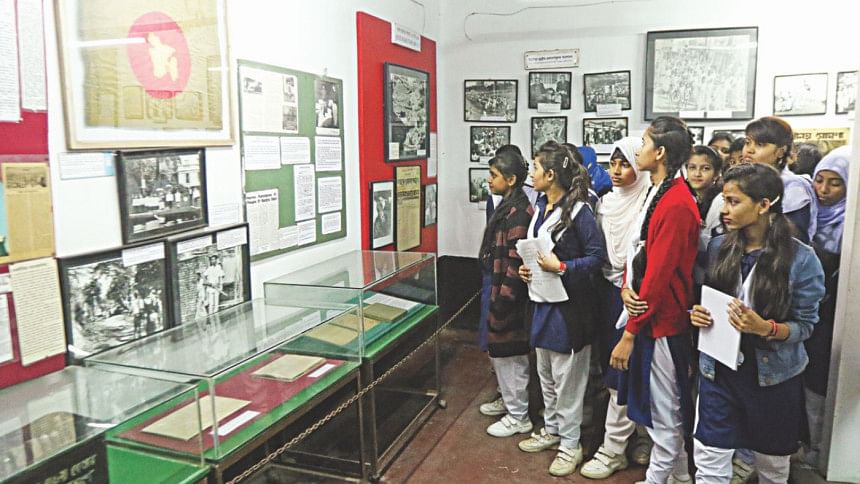Muktijuddho Jadughar (Liberation War Museum)

Starting its journey on March 22, 1996, the Liberation War Museum, more commonly known among Bangladeshis as the Muktijuddho Jadughar, has made a special place for itself in the hearts of millions. Located in a two-storied house in the capital's Segun Bagicha, the museum, an outcome of citizens' effort, does not just preserve history of the glorious Liberation War of 1971 but also through various programmes and activities engages with the new generation to make them aware of the history of their country.
Two of its most popular youth programmes have been the Outreach and the Reach Out programme. Through the Outreach programme, started in 1997, students of educational institutions in and around Dhaka get the opportunity to visit the museum, while through the Reach Out programme, which began in 2001, two mobile museum buses take selected exhibits to schools and colleges in other districts of the country. Till date, more than 1,900 educational institutions have been covered and about nine lakh students have been reached. An oral history project of collecting incidents of the Liberation War is also being undertaken through these two programmes. So far, more than 28,000 oral histories have been collected.
Run by an eight-member trustee board, the six galleries of the museum offers a tour that starts with the early history of the country, gradually moving on to its struggle against all forms of oppression during the British and the Pakistan rule, finally leading to the Liberation War. Almost reaching its 20th year, the museum now has over 18,000 exhibits, but due to space constraints cannot display its whole collection at the same time.

In 2013, the museum acquired its own land in the capital's Agargaon and construction of a museum compound is underway. True to its nature of being a people's museum, the money for building the new structure is being raised through people's donation.
Besides the displays, a library and kiosks, the museum has a rich collection of books and audio-visual materials on the Liberation War of Bangladesh. The documents and exhibits of the museum were also used at the International Crimes Tribunal. Last year, the museum opened the Centre for Study of Genocide and Justice under which students and professionals can learn about the causes and context of genocide in the history of mankind through one-month long workshops. A seven-day long winter-school was also conducted last year under this programme.
Founder of the “International Coalition of Sites of Conscience”, the museum brings together historic site museums from other parts of the world, sharing histories of atrocities, genocide and memories of people. The Jalladkhana (Slaughter House) killing field in Mirpur, from where remains of many martyrs were exhumed in 1999, was transformed into a memorial park to enable people to reflect on the atrocities carried out there and to realise the outcome of hatred and cruelty.
One of the most mentionable features of the museum is its large volunteer base. Young people from universities and colleges are actively engaged in different activities of the museum throughout the year. The museum holds a Victory Day festival with young children from educational institutions and also celebrates international days such as Hiroshima Day, Refugee Day and Non-Violence Day. Since 2013, the musuem has also been giving out the Bazlur Rahman Smriti Padak, an award given to journalists for reporting on Liberation War issues.

 For all latest news, follow The Daily Star's Google News channel.
For all latest news, follow The Daily Star's Google News channel. 



Comments